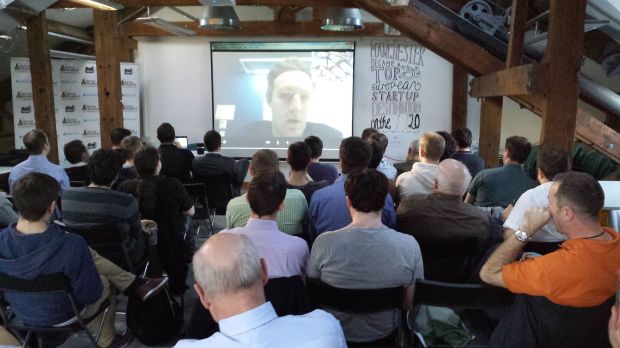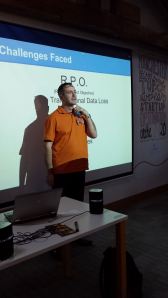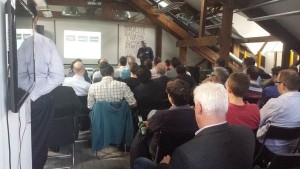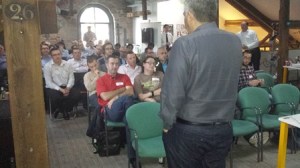We’ve been organising the Amazon Web Services User Group North (or #AWSNorth on Twitter) for about 2 years now. The group brings AWS users and experts together in one place to foster learning, discussion and networking, and it’s always an interesting evening – typically we have a guest speaker showing an AWS related tool or sharing a use case.
We usually have an Amazonian in attendance, which is great for the AWS users to voice their opinions and ask for help in person. At the previous meetup, Ryan Shuttleworth from Amazon told me about the Irish AWS User Group that recently started up and their success with lightning talks – quick-fire 5 minute long talks from members of the group. The idea of lightning talks is that you get to hear from a variety of speakers on all sorts of topics in a short space of time. It’s also somehow appropriate that a group about “clouds” produces “lightning” talks…
So last night we had our first go at lightning talks. First in the firing line was David Hall, from the night’s sponsors TeleCity Group, who explained the history behind TeleCity’s AWS Direct Connect service. This was followed by Amazon’s Data Scientist extraordinaire Matt Wood, an old favourite speaker from the early days of our group. Since the first few meetups, though, Matt has relocated to Amazon’s home of Seattle, so in this case he returned in Skype form. Matt(‘s giant head on a screen) gave a great lightning talk on provisioning throughput “like a boss” (click link for Matt’s slides).

Matt Wood gave his lightning talk live from Seattle
Next up was Bashton.com‘s Sam Bashton, who talked in depth about their experiences with AWS CloudFormation, followed by Alastair Henderson. Alastair took the opportunity to open the floor to suggestions on the best way to solve a specific problem he was having, utilising both his presentation time and the expertise of group members effectively. Smart thinking! Richard Bosomworth took his turn, giving a detailed hands-on demonstration of using Scalr to manage EC2.

Alistair Henderson took the opportunity to seek advice from his fellow AWS enthusiasts
Tom Chiverton gave an interesting and open presentation about his experiences in moving away from “spinning rust” to quote Linus Torvalds, with a focus on Amazon Simple Storage Service (S3). And in the final talk of the evening, Channel 4’s Ric Harvey returned, having been our headline speaker at the previous meetup. Like Tom, Ric talked about using S3, but this time using it a little bit differently.
Thanks to TeleCity Group for sponsoring the drinks and pizzas, and to Tech Hub Manchester for once again being great hosts. If you have a requirement for a great venue to host your tech meetup, I would highly recommend talking to Tech Hub!
And of course, thanks to David, Matt, Sam, Alastair, Richard, Tom & Ric for making the evening a success with their brilliant presentations. We’ll be sure to do more sessions like this in future in the hopes the lightning strikes twice (sorry!).
If you’re interested in AWS, consider joining our Meetup group or one of the many user groups around the world.
















